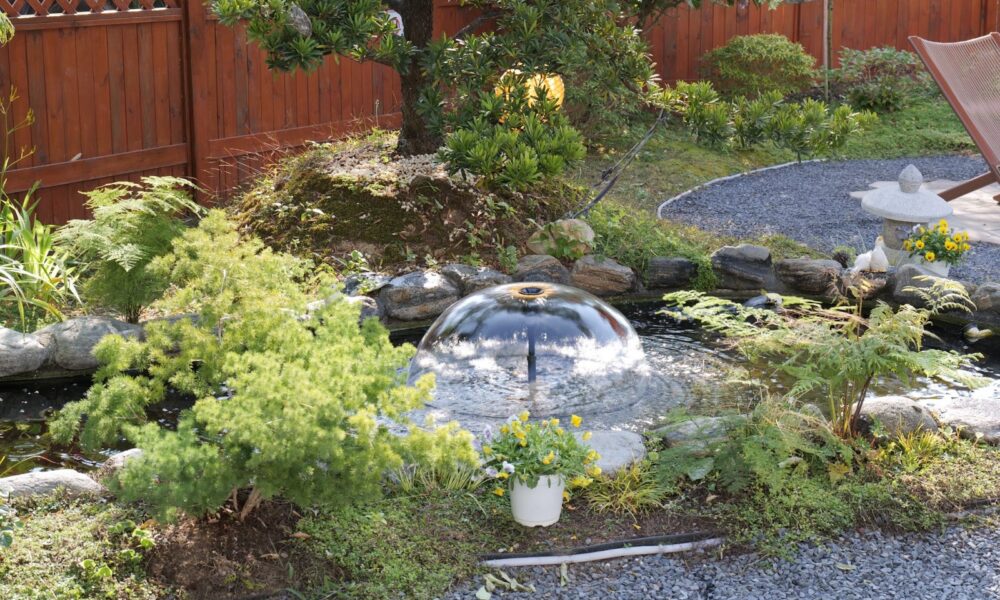Why Your Pond Water Is Green – Causes & Fixes Every Pond Owner Should Know

A beautiful pond is the jewel of any garden a serene, reflective space where koi glide beneath lily pads and dragonflies skim across the surface. But when the water turns green, that peaceful oasis can quickly become a murky mess.
Green pond water is one of the most common issues pond owners face, and it can be frustrating to diagnose and fix without understanding the underlying causes.
What Makes Pond Water Turn Green?
The primary reason pond water turns green is algae overgrowth specifically, single-celled phytoplankton that float freely in the water. When they multiply rapidly, the water takes on a green hue, making it appear cloudy or opaque. This phenomenon is commonly referred to as a green water bloom.
But algae aren’t inherently bad. In fact, they’re a natural part of any pond ecosystem. The trouble arises when conditions allow algae to thrive beyond control. Let’s explore the key causes.
Common Causes of Green Pond Water
1. Excess Sunlight
Algae are photosynthetic organisms, which means they use sunlight to grow. If your pond is exposed to full sun for most of the day, you’re providing the perfect conditions for algae to bloom.
Introduce floating plants like water lilies, water hyacinth, or duckweed to create natural shade. You can also use shade sails or pergolas to partially block sunlight without sacrificing beauty.
2. Nutrient Imbalance
Algae feed on nutrients primarily nitrates and phosphates. These nutrients often come from fish waste, decaying plant matter, uneaten food, and even runoff from fertilized lawns.
Remove dead leaves and uneaten food promptly. Avoid overfeeding fish. Consider using barley straw or natural phosphate removers to reduce nutrient buildup.
3. Lack of Oxygen
Stagnant water with poor oxygenation encourages algae growth. Proper aeration not only benefits fish but also discourages unwanted algae by supporting beneficial bacteria that compete for nutrients.
Install a pond aerator or a waterfall to improve circulation. Even small air stones can make a significant difference.
4. Insufficient Filtration
Without adequate filtration, waste products accumulate, and water quality deteriorates. Over time, this leads to nutrient-rich conditions where algae flourish.
Upgrade or maintain your Poposoap floating solar fountain. Choose filters that are appropriately sized for your pond’s volume and bio-load. Regular cleaning ensures efficiency without harming beneficial bacteria colonies.
5. Overstocked Fish Population
Too many fish in a small pond leads to more waste, which translates into more nutrients for algae. Overstocking also strains your filtration system.
Maintain a balanced fish-to-water ratio. As a general rule, allow about 10 gallons of water per inch of fish. Rehome excess fish if needed.
6. New Pond Syndrome
If your pond is newly constructed or recently cleaned, the ecosystem may not be established yet. In this case, beneficial bacteria haven’t populated sufficiently to keep algae in check.
Be patient and let nature take its course. Add natural bacteria supplements to speed up the process. Avoid over-cleaning, as it disrupts the balance.
Fixing Green Pond Water: Step-by-Step
Once you’ve identified the cause of green water in your pond, it’s time to take action. The following step-by-step strategy will help you clear the water naturally and sustainably.
Step 1: Test the Water
Start by testing for:
- pH levels
- Ammonia
- Nitrites
- Nitrates
- Phosphates
Many garden centers sell kits for testing ponds. These readings will reveal whether nutrient overload is the primary culprit and help guide your treatment plan.
Step 2: Remove Debris
Clean out any visible organic debris like:
- Fallen leaves
- Decaying plants
- Excess algae mats
Use a pond skimmer or net for surface cleaning. Avoid draining the pond completely unless necessary, as this can shock fish and beneficial bacteria.
Step 3: Enhance Filtration
Check your existing pond filters to ensure they’re working properly. If they’re underpowered or clogged, consider upgrading to a multi-stage filtration system that includes mechanical, biological, and UV clarification elements.
UV clarifiers are particularly effective against single-celled algae that cause green water. They work by exposing algae to ultraviolet light, disrupting their reproductive cycle and clumping them for easy removal.
Step 4: Introduce Beneficial Bacteria
Beneficial bacteria break down excess nutrients and organic waste, helping to establish a healthy bio-balance in your pond. These can be added in liquid or pellet form and are safe for fish and plants.
Consistent use over several weeks will reduce nutrient levels naturally, making it harder for algae to rebound.
Step 5: Add Oxygenating Plants
Aquatic plants like anacharis, hornwort, and cabomba not only produce oxygen but also absorb excess nutrients, crowding out algae. Floating plants also provide shade, which reduces photosynthesis.
Aim to cover about 50–70% of your pond’s surface with plants for maximum benefit.
Step 6: Limit Sun Exposure
Install shade solutions if your pond is exposed to intense sunlight for extended periods. Planting trees nearby (at a safe distance to avoid root interference) or using floating islands can also create partial shade.
Step 7: Monitor and Maintain
Once your pond clears, don’t stop there. Regular maintenance is key to preventing future algae outbreaks.
- Skim debris weekly
- Check filter systems monthly
- Test water chemistry seasonally
- Trim aquatic plants as needed
A balanced pond is self-regulating, but your consistent care will ensure long-term clarity.
Natural Remedies to Try
If you’re not a fan of chemicals and want to take a more holistic approach, these natural methods are worth exploring:
Barley Straw
As barley straw decomposes, it releases compounds that inhibit algae growth. Place it in mesh bags and float it near your pond’s edge. Replace every few months.
Hydrogen Peroxide
Used sparingly, diluted hydrogen peroxide (3%) can help break down green algae. Always use caution too much can harm fish and plants.
Rainwater Harvesting
Rainwater has fewer nutrients than tap water and can help dilute your pond without adding contaminants. Just be sure it doesn’t carry lawn fertilizer from run-off.
When to Use Algaecides
Algaecides are chemical treatments designed to kill algae quickly. While they may offer fast results, they often come with risks:
- Can harm fish if overdosed
- Kill beneficial bacteria
- Don’t address the root cause
Use algaecides only as a last resort and in conjunction with long-term natural strategies. They are best suited for emergency situations where oxygen levels or fish health are in immediate danger.
Preventing Green Water Long-Term
The best treatment is prevention. Here are some tips to keep your pond clear year-round:
- Feed fish sparingly: Excess food becomes nutrient waste.
- Perform partial water changes: Replace 10–15% of pond water monthly.
- Maintain proper plant-to-water ratio: Plants are your best natural filter.
- Avoid over-cleaning: Beneficial bacteria thrive in stable environments.
- Keep a pond log: Track changes, maintenance, and seasonal patterns.
Final Thoughts
Green pond water might seem like an unsightly nuisance, but it’s also a sign of an invitation to understand and reconnect with the ecosystem you’ve created. Like any garden element, a pond thrives with balance, attention, and patience.
The key lies in understanding the causes and implementing thoughtful, sustainable solutions. From improving your filtration system to harnessing the power of oxygenating plants and beneficial bacteria, you have the tools to restore your pond’s beauty and health.
With just a few adjustments and consistent care, your pond will transform from a murky mystery into a crystal-clear haven that reflects the harmony of nature and the joy of water gardening.




